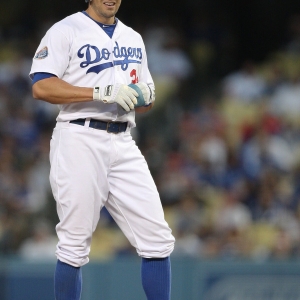A Quick Guide to MLB Uniform Rules

If you are a devoted baseball fan, you've likely observed the distinct uniforms worn by players during home and away games, and on special occasions. In Major League Baseball (MLB), these uniforms are far more than mere clothing—they serve as a powerful visual representation of team unity, tradition, and adherence to a meticulously crafted set of rules.
Uniforms in MLB transcend mere aesthetics; they play a pivotal role in fostering a sense of team identity and pride. The regulations set by the league go beyond ensuring a consistent visual appeal—they emphasize the significance of tradition, professionalism, and the spirit of the game itself.
Let's dive into the specifics of MLB uniform rules and regulations to understand how they shape the iconic look of America's favorite pastime.
1. Uniform Consistency
All players on a team must wear uniforms that are identical in color, trim, and style.
A minimum six-inch number prominently displayed on the back facilitates easy identification for players, officials, and fans alike.
2. Undershirts and Personalization
Exposed undershirts must be of a uniform solid color for all players on a team.
Players, excluding pitchers, can add numbers, letters, or insignia on the sleeves of their undershirts, allowing for individual expression within the collective team aesthetic.
3. Conformity Requirement
Players deviating from the team's standard uniform are not permitted to participate in a game, underscoring the importance of uniformity in creating a cohesive team image.
4. Distinctive Uniforms and Sets
Leagues may mandate distinctive uniforms at all times or prescribe different sets for home and away games, allowing for variety while maintaining a consistent team identity.
5. Sleeve Lengths and Presentation
Individual variations in sleeve lengths are allowed, but they must be approximately the same length, free from ragged edges.
Pitchers are prohibited from wearing distracting white or gray sleeves, preserving the focus on the game.
6. Uniform Integrity
Players are forbidden from attaching tape or materials of a different color to their uniforms, ensuring a uniform and professional aesthetic.
7. Pattern Limitations
Baseball uniforms may not include patterns imitating or resembling the shape of a baseball, preserving the integrity of the game's visual representation.
In 2018, the New York Yankees faced scrutiny when some players wore a modified version of traditional pinstripes, sparking discussions about adherence to MLB regulations.
8. Material Restrictions
Glass buttons and polished metal are prohibited on uniforms, prioritizing player safety and preventing potential equipment hazards.
In the early 2000s, certain teams experimented with metallic-looking logos and buttons on jerseys. MLB intervened, emphasizing the importance of using safe materials to avoid potential injury risks.
9. Shoe Regulations
Players are restricted from attaching anything to the heel or toe of their shoes, ensuring safety and fair play.
In 2019, Chicago Cubs player Ben Zobrist was briefly benched for wearing all-black cleats in violation of the baseball uniform rules, sparking conversations about individual expression within established guidelines.
10. Advertising Guidelines
Commercial advertisements on uniforms are restricted, with approvals managed by the Office of the Commissioner in consultation with the Players Association.
Throughout MLB history, players have faced fines for featuring unauthorized logos or writing on their equipment, showcasing the league's commitment to regulating commercial endorsements within specified parameters.
11. Player Names on Uniforms
Leagues may include player names on the back of uniforms, emphasizing the significance of maintaining a professional and standardized appearance. Any non-last name inclusion requires approval from the Office of the Commissioner.
In the 1970s, Pittsburgh Pirates player Dock Ellis wore the word "Kulax" on the back of his jersey, prompting discussions about the league's approval process for non-last name inclusions.
Final Thoughts
In the world of Major League Baseball, uniforms transcend mere attire; they symbolize tradition, teamwork, and a commitment to a set of carefully crafted rules. Explored in detail, the baseball uniform rules and regulations set by the MLB extend beyond aesthetics, playing a crucial role in fostering team identity and ensuring fair play on the diamond. Adhering to these regulations is not just a formality but a fundamental aspect of upholding the integrity, consistency, and safety of the game.
Balancing individual expression within the framework of team conformity, players showcase a cohesive and iconic look. Teams and players must embrace and honor these guidelines to maintain a fair, professional, and visually compelling playing environment. For the most current and detailed information, it is recommended to refer directly to the MLB Official Baseball Rules.
Looking for Custom Baseball Uniforms?
Contact our team at Cisco Athletic for a FREE QUOTE so we can help gear up your team this season!

